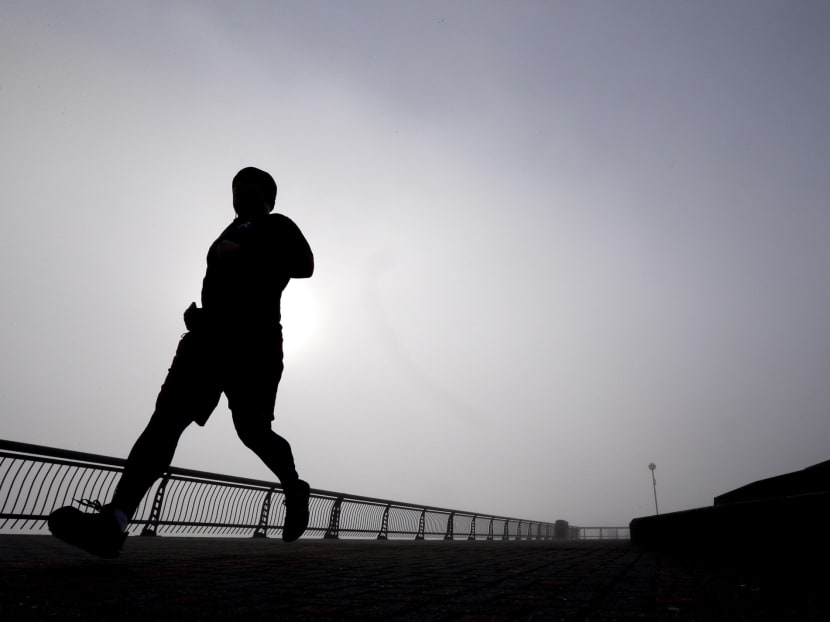Hot weather workout? Take a hot bath
NEW YORK — There are many ways to cope with exercising in hot weather. But one of the most effective may be, surprisingly, to soak in long, hot baths in the days beforehand, according to a well-timed new study of how best to prepare for athletic competitions in the heat.

AP file photo
NEW YORK — There are many ways to cope with exercising in hot weather. But one of the most effective may be, surprisingly, to soak in long, hot baths in the days beforehand, according to a well-timed new study of how best to prepare for athletic competitions in the heat.
Across the United States and much of the Northern hemisphere, summer temperatures are spiking, which can make outdoor exercise gruelling. When it is hot, our hearts labour to shunt more blood to the skin, which allows internal heat to dissipate but also leaves us feeling fatigued and logy and potentially at risk for heat illnesses, ranging from nausea to grievous heatstroke.
Scientists and coaches have come up with many ways to help athletes cope with the heat. Some involve a process known as precooling, which entails drinking icy beverages or applying ice to the skin before exercise, on the assumption that we can better withstand high temperatures outside by lowering our body’s internal or skin temperature before we start.
Other strategies emphasise heat acclimation, which is the slower process of adapting to high temperatures over the course of days or weeks. During heat acclimation, your body changes in many ways, including starting to sweat earlier and more profusely, which helps to reduce the buildup of internal heat and ease the demands on your heart.
But while many past studies have looked at the effects of either precooling or longer-term heat acclimation on exercise in the heat, fewer have compared their effects head-to-head, or examined whether you gain extra benefits from combining acclimation and precooling.
So for the new study, which was published last month in the Journal of Strength and Conditioning Research, scientists at the Environmental Extremes Laboratory at the University of Brighton in England and other institutions invited nine recreational runners who were not heat acclimated to their lab and cranked up the furnace to about 90 degrees (32 degrees Celsius).
The scientists asked the runners, who included one woman, to complete a simulated 5km race at top speed on a treadmill in the sweltering room.
Then they had the runners repeat that race on three subsequent visits.
Before one of these, they had the runners first precool their skin by thrusting an arm into a vat of cold water and also donning cooling vests and athletic underwear fitted with ice packs. (In earlier research, the scientists had found that the frozen underwear approach to precooling was more effective than drinking a slushie, so they did not bother with cold beverages for this study.)
After 20 minutes, the runners doffed their ice packs and ran again.
Then the scientists began formally acclimating them to the heat. They did this by dialling up temperatures in the lab to almost 99 degrees (37 degrees Celsius) and having their volunteers pedal an exercise bicycle for about 90 minutes in this heat, at an increasingly vigorous pace for five days in a row, under the close supervision of the researchers.
Afterward, the runners repeated their 5K-treadmill race.
Finally, during a last visit, the runners, still heat acclimated, now precooled as they had before with frozen undergarments and a chilly arm plunge and ran again.
The scientists then simply compared their times. As expected, the runners were slowest in their first run, when they had not prepared for the heat at all.
After precooling with iced underwear and such, however, they were significantly faster, improving by almost 4 per cent.
But they were even speedier after four days of acclimation, dropping their time by more than 6.5 per cent compared with their first run.
Interestingly, they gained little more by combining acclimation and precooling. Their times in that final run were barely faster than after acclimation alone.
The upshot of these results is that “you will receive a bigger bang for your buck from acclimating to the heat rather than by temporarily cooling yourself down” with chilled clothing and such, says Carl James, who led the study while at the University of Brighton. He is now a senior physiologist at the National Institute of Sport in Malaysia.
On the other hand, precooling can be a useful stopgap measure when temperatures suddenly rise and you do not have time to acclimate before a looming competition, he says. “Throw your ice vest and cooling shorts into the freezer” and wear them for about 20 minutes before your event, he advises.
Acclimation demands far more time and planning. During your first workouts in summer heat, he says, reduce the time you spend outside and go at a gentler pace than normal, slowly ramping up your effort as the exertion begins to feel more tolerable, which can require anywhere from four or five days to two weeks, depending on your current fitness and heat tolerance. Be sure to drink plenty of water, too, he says, since you will start to sweat more profusely.
Or, alternatively, “lie in a hot bath, heated to at least 40°C” “for 30 minutes after a 30-minute run”, he says, which can amplify your body’s adaptations to the heat, he says, without requiring more time outside in the high temperatures and allow you also to catch up on your bath time reading.
But bear in mind, James cautions, that even careful acclimation or precooling will not make you immune to heat illness. “Headaches, nausea, dizziness and muscle cramping are all indicators of heat illness, at which point you should slow down and seek shade,” he says, and probably call for an air-conditioned ride home. THE NEW YORK TIMES





